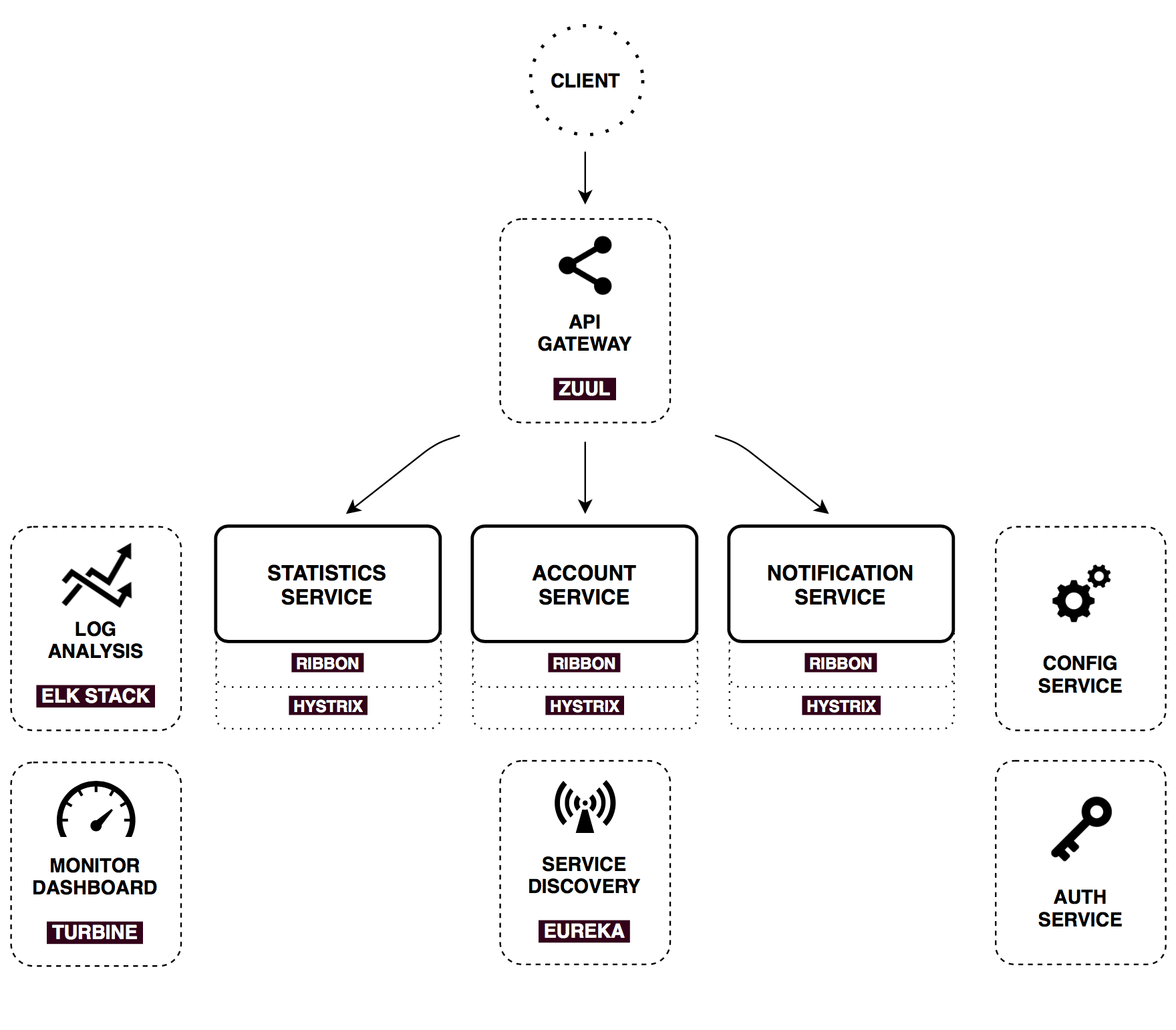Microservice Architectures With Spring Cloud and Docker
Categories:
Spring Cloud and its Components
The article introduces the Spring Cloud framework, which simplifies the development of distributed systems based on microservices. It covers various components of Spring Cloud, such as Eureka for service discovery, Ribbon for client-side load balancing, and Zuul for API gateway functionality.
Ribbon
Ribbon is a client-side load balancing library that works in conjunction with Spring Cloud to distribute the client requests across multiple service instances. It allows you to balance the load and improve the scalability and availability of your microservices. Ribbon uses a variety of load balancing algorithms, such as Round Robin, Random, and Weighted Response Time, to distribute requests intelligently among service instances. It integrates seamlessly with Spring Cloud and provides automatic service discovery and registration through integrations with other components like Eureka.
Hystrix
Hystrix is a latency and fault tolerance library designed to handle the resiliency of microservices. It helps you build fault-tolerant systems by isolating points of access between services, preventing cascading failures, and providing fallback mechanisms. Hystrix introduces the concept of circuit breakers, which monitor the availability of a service and open the circuit if the service is not responding within a specified threshold. When the circuit is open, Hystrix can redirect requests to fallback methods or predefined responses, preventing failures from impacting the entire system.
Feign
Feign is a declarative web service client developed by Netflix and integrated into the Spring Cloud ecosystem. It simplifies the development of RESTful clients by allowing you to define interfaces and automatically generating the implementation code for making HTTP requests. Feign integrates seamlessly with Ribbon and Eureka, leveraging the load balancing and service discovery capabilities provided by these components. With Feign, you can write clean and concise code for interacting with other microservices in a declarative manner, reducing boilerplate code and improving productivity.

These three components, Ribbon, Hystrix, and Feign, are essential parts of the Spring Cloud ecosystem. They work together to enhance the resilience, scalability, and communication between microservices in a distributed system. By leveraging these components, you can build robust and fault-tolerant microservice architectures.
Docker for Containerization
The article explains Docker, an open-source platform for containerizing applications. It discusses the benefits of containerization, including consistency and portability, and demonstrates how Docker allows developers to package their microservices and their dependencies into containers.
Building Microservices with Spring Boot and Spring Cloud
The article guides readers through the process of creating microservices using Spring Boot and Spring Cloud. It covers setting up a Eureka server for service registration and discovery, implementing a simple microservice using Spring Boot, and utilizing Ribbon for client-side load balancing.
Containerization with Docker
The article demonstrates how to containerize microservices using Docker. It explains Docker Compose, a tool for defining and running multi-container Docker applications, and showcases how to configure a Docker Compose file to deploy microservices.
Conclusion
In conclusion, the article emphasizes the advantages of using Spring Cloud and Docker together in a microservices architecture. It highlights the flexibility, scalability, and ease of deployment achieved through this combination.
Overall, the article provides a high-level overview of building microservices with Spring Cloud and Docker. It covers the essential concepts and demonstrates the integration of these technologies in a practical manner.
Read the full article for more detailed insights and examples.
This is the final element on the page and there should be no margin below this.